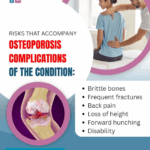
Spondylosis is a term you might hear often if you or someone you know has been dealing with back or neck pain. But what does it really mean? In simple terms, spondylosis refers to age-related wear and tear affecting the spinal discs, joints, and bones. It is one of the most common degenerative conditions seen in people over the age of 40 and can impact daily life significantly if not managed properly.
Let’s explore spondylosis in detail — its causes, symptoms, diagnosis, treatment options, and why early intervention matters.
Understanding Spondylosis: The Basics
Spondylosis is a degenerative spinal condition that can occur in any part of the spine — cervical (neck), thoracic (mid-back), or lumbar (lower back). It is primarily caused by the natural aging process, where spinal discs lose their flexibility and cushioning ability, leading to increased friction between vertebrae.
Over time, the body may respond by forming bone spurs (osteophytes) to stabilize the spine, which can compress nerves and cause pain or stiffness.
Types of Spondylosis
- Cervical Spondylosis
Affects the neck region; can cause neck pain, headaches, and radiating pain in shoulders and arms. - Thoracic Spondylosis
Less common; affects the middle spine and may cause upper back discomfort or tightness. - Lumbar Spondylosis
Most common type; affects the lower back, leading to pain, numbness, or tingling in the legs or feet.
Common Causes of Spondylosis
- Aging: Natural degeneration of spinal discs and joints.
- Sedentary lifestyle: Lack of movement weakens spinal support.
- Repetitive strain: Heavy lifting or poor posture accelerates wear.
- Genetics: Family history can increase your risk.
- Previous injuries: Past spinal trauma may lead to early degeneration.
- Obesity: Adds extra stress on spinal structures.
Symptoms to Watch Out For
Spondylosis can be silent in early stages but gradually presents symptoms such as:
- Chronic neck or back pain
- Muscle stiffness or reduced flexibility
- Tingling, numbness, or weakness in limbs
- Difficulty standing or sitting for long periods
- Loss of coordination or balance (in severe cases)
If you are experiencing these symptoms, especially if they interfere with daily activities, it’s important to consult a specialist.
Diagnosing Spondylosis
A proper diagnosis involves a combination of:
- Medical History Review: To understand pain patterns and risk factors.
- Physical Examination: Checking posture, movement, and reflexes.
- Imaging Tests: X-rays, MRI, or CT scans help identify disc degeneration, bone spurs, or nerve compression.
Early diagnosis allows for targeted treatment plans, which can greatly reduce discomfort and prevent complications.
Spondylosis Treatment Options
The good news is that most cases of spondylosis can be managed without surgery. At Dr. Mandar Border’s clinic, a personalized approach to Spondylosis Treatment in Swargate, Pune helps patients regain mobility and improve quality of life. Common treatments include:
1. Medications
- Pain relievers and anti-inflammatory drugs
- Muscle relaxants for spasms
2. Physiotherapy
- Exercises to strengthen back and neck muscles
- Stretching to improve flexibility
- Postural training
3. Lifestyle Modifications
- Ergonomic support while sitting or working
- Weight management
- Regular low-impact exercises like walking or swimming
4. Injections
- Corticosteroid injections in cases of nerve root irritation
5. Surgery (in rare cases)
If conservative treatments fail and there’s severe nerve compression, surgery might be considered.
Why Choose us?
Dr. Mandar Border is a renowned orthopedic and spine specialist in Pune, offering advanced and compassionate care for spinal disorders. His clinic at Sinhgad Road is equipped with modern diagnostic tools and evidence-based therapies tailored to each patient’s needs.
Whether you’re dealing with chronic neck pain, limited back mobility, or nerve-related issues, Dr. Border’s multidisciplinary approach ensures safe, effective, and long-term relief.
Prevention Tips for a Healthier Spine
While aging is inevitable, you can minimize your risk of developing spondylosis with a few healthy habits:
- Maintain an active lifestyle with regular stretching
- Avoid long hours of sitting or hunching over devices
- Use supportive chairs and proper lifting techniques
- Stay hydrated to keep discs healthy
- Schedule regular checkups if you have a family history
Conclusion
Spondylosis is a common yet manageable condition. Recognizing the symptoms early and seeking appropriate treatment can significantly improve your spinal health and overall well-being. If you are searching for reliable and result-oriented Spondylosis Treatment in Pune, consult Dr. Mandar Border for expert diagnosis and customized care.
Your spine supports you — now it’s time you support your spine.

 Select an element to maximize. Press ESC to cancel.
Select an element to maximize. Press ESC to cancel.

